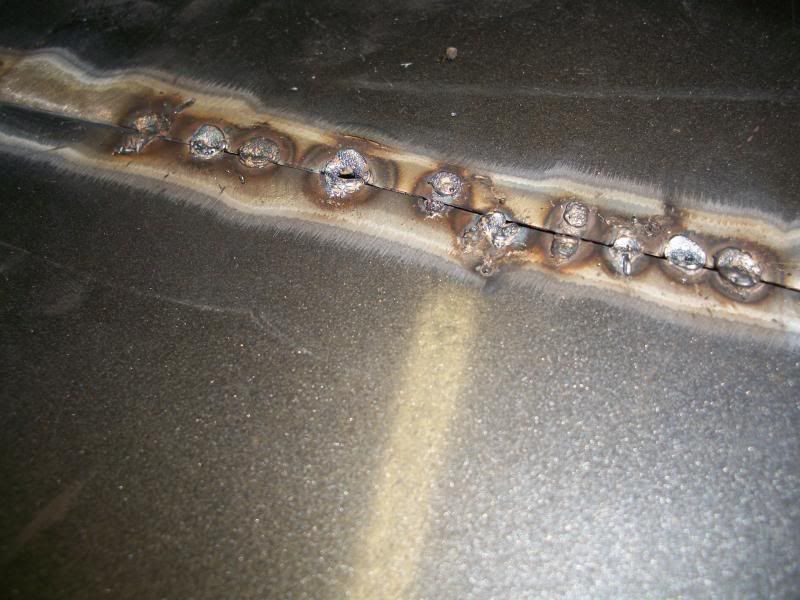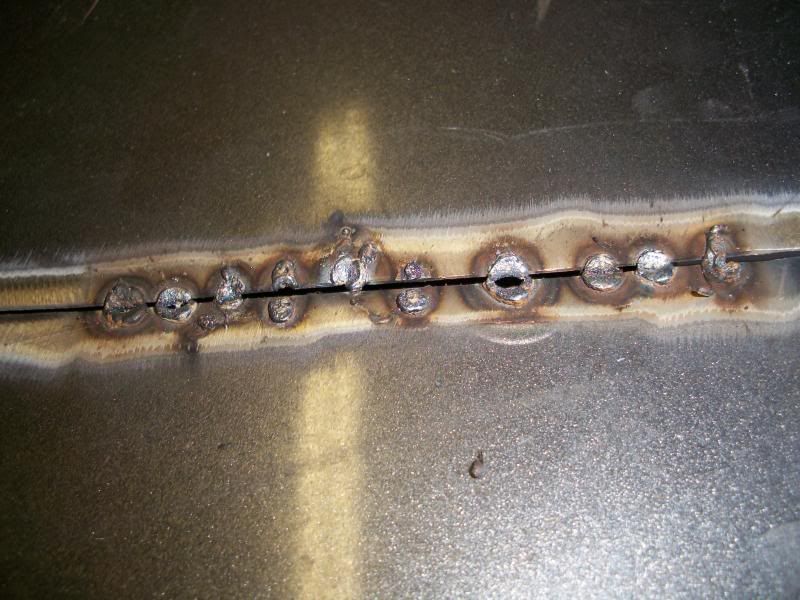ESP47
Well-Known Member
I've dabbled with this welder a few times but I've never really gotten the hang of it. It's a Hobart 140 with gas. I have the voltage set to 1 and the wire speed is at 30. I'm practicing on a dented up fender I got for free. Just trying to cut pieces off and weld them back on. Still even with the voltage down to 1, it just wants to blow right through the metal. I changed over the polarity of the wires and all that in the machine as well. I have a ton of questions if anyone could at least answer some of them.
What am I doing wrong from the looks of the picture? The welds are a combination of me and a buddy who doesn't know what he's doing either.
How can I tell that the gas is working? I have the bottle open and the gauges read as if there's pressure but I have no idea if the gas is even working. Can you see or smell it? I almost feel like it's not working at all.
How much wire should be sticking out of the gun when I initially start the weld?
How far do I then have the wire away from the metal when I pull the trigger?
To tack the two pieces together, do you start on one side and quickly puddle to the other using the back and forth motion? Or do you just point right between the pieces and hold it still for a second while you tack?
I held the gun fairly far away from the metal on the welds that look like they are joining the two sides together. The welds look pretty cold to my untrained eye and don't look like they'd hold very well from the backside. Any help would be appreciated.


What am I doing wrong from the looks of the picture? The welds are a combination of me and a buddy who doesn't know what he's doing either.
How can I tell that the gas is working? I have the bottle open and the gauges read as if there's pressure but I have no idea if the gas is even working. Can you see or smell it? I almost feel like it's not working at all.
How much wire should be sticking out of the gun when I initially start the weld?
How far do I then have the wire away from the metal when I pull the trigger?
To tack the two pieces together, do you start on one side and quickly puddle to the other using the back and forth motion? Or do you just point right between the pieces and hold it still for a second while you tack?
I held the gun fairly far away from the metal on the welds that look like they are joining the two sides together. The welds look pretty cold to my untrained eye and don't look like they'd hold very well from the backside. Any help would be appreciated.


















